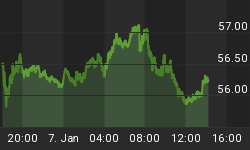A super hot real estate market is about to get a reality check with rising mortgage rates.
Rising mortgage rates in the U.S. in recent months have served to dampen demand for loans to purchase homes, with mortgage applications last week plunging to their lowest level in more than two years.
However, the trend probably won’t last long and Russia’s invasion on Ukraine might be a cause of change.
According to the Mortgage Bankers Association (MBA) Market Composite Index, a measure of mortgage loan application volume tumbled 13.1% on a seasonally adjusted basis.
According to the MBA report, the Refinance Index decreased 16% from the previous week and was 56% lower than the same week one year ago. The seasonally adjusted Purchase Index decreased 10% from one week earlier.
The 30-year fixed mortgage rate averaged 4.16% last week and was almost a full percentage point higher than a year ago. However, since the Russian invasion, rates fell to 3.9% as investors rushed into the bond market, which are considered as a less volatile investment than the stock market.
“Purchase applications, already constrained by elevated sales prices and tight inventory, have also been impacted by these higher rates and declined for the third straight week…We will continue to assess the potential impact on mortgage demand from the sharp drop in interest rates this week due to the invasion of Ukraine, Joel Kan, MBA's Associate Vice President of Economic and Industry Forecasting said in the report.
The Federal Reserve is poised to start raising interest rates this month to fight a surge in inflation and economists were expecting as many as seven rate hikes from the U.S. central bank this year.
Earlier this week, Fed Chairman Jerome Powell said he still sees interest rate hikes ahead, though he noted the implications for the U.S. economy are highly uncertain from the Ukraine war.
Last month, online real estate giant Zillow issued home price predictions for 2022 and forecasted that home prices will increase by 16.4%.
“Home values are expected to grow 4.1% in Q1 2022, and to end 2022 up 16.4% from the end of 2021, with the pace of annual growth expected to peak at 20% in February before gradually slowing throughout the remainder of the year,” the report said.
Still, the company did include some downside risks to the forecast, noting that “elevated inflation heightens the risk of near-term monetary policy tightening, which would result in higher mortgage rates and weigh on housing demand”.
Since the start of the pandemic, U.S. median home list prices are up 27%, as massive home buyer demand saw inventory plunge to a 40-year low with multiple biddings reaching all-time high.
A couple of factors helped push up house prices.
The pandemic increased demand for housing in tandem with increased work-from-home trends. In addition, historically low mortgage interest rates made home-buying extra attractive.
Also, new construction couldn’t keep pace with the demand, mostly due to the lockdowns during most of 2020 and a subsequent building material supply crunch.
Even once the pandemic eased, home prices in the U.S. increased 19.1% in January 2022 compared to January 2021. On a month-over-month basis, home prices increased by 1.4% compared to December last year.
















